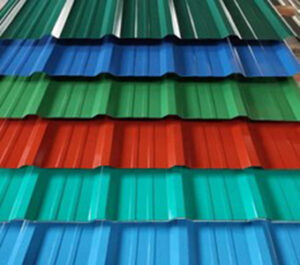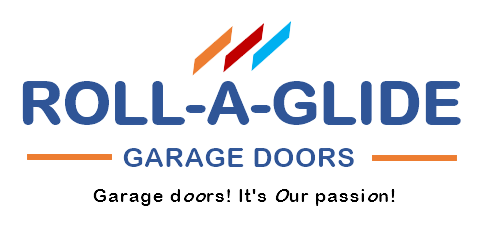ROOF SHEETING
Aluzinc color is the roofing and cladding material of choice made by architects, designers, industry, and homeowners renowned for its aesthetic value, protection from the natural elements and the ease of application complimenting any building. Aluzinc consists of 55% aluminium, 43.4% zinc and 1.6% silicon. It’s a popular choice for many industrial and construction applications due to its excellent corrosion resistance and durability.
The topcoat paint system has been specifically developed for the harsh African sun (UV environment)

Lengths Available in IBR Profiles
IBR sheets are cut in lengths of up to 14 metres. With a length tolerance of -0 +5 mm. Sheets lengths up to 15.8m are available on enquiry.
For bullnoses and curves, the maximum allowable for transport height is 4.3 metres.
Roof slope
- When using IBR, the recommended minimum pitch for roof slopes over and above 15.8m is 7.5º, and for slopes less than 15.8 m is 5º.
- The minimum end laps for roofs pitches >15º is at least 150 mm and 250 mm for other roofs. Side cladding end laps should be at least 100 mm.
- We recommend that end laps on roofs <7.5º are sealed with a bitumen sealing strip to ensure water tightness.
Our recommended fixing procedure
The required number of IBR sheets is calculated as follows:
- Length of structure plus gable end overhangs – (minus) 70 mm
- Number of sheets = 0.686 m (Cover width of sheet)
The result of the calculation is then rounded up to the next sheet
IBR must be fixed with one corrugation side lap. With the narrow flute uppermost and fastened through the crests of alternate flutes to purlins, using 65 mm Tek screws into steel purlins and 90 mm Tek screws for timber roofs, each fastener must incorporate a 25 mm bonded washer.
For side cladding, broad flutes can be fixed externally with fasteners in the web of the flutes. Side cladding can be fixed using 25 mm Tek screws with a 19 mm bonded washer.
For a quick calculation, three fasteners per sheet per purlin can be used.
This Profile is manufactured in two sizes, namely the 8.5 wave and the 10.5 wave corrugations. Both these sizes can currently be manufactured in various thicknesses (gauges) from input material ranging from 0.27mm to 0.8mm.
The effective cover of the 8.5 wave sheet is 610mm and that of the 10.5 wave sheet is 762mm.
Polycarbonate is one of the newer plastics to be used in the construction industry around the world.
Typical uses:
Polycarbonate roof sheeting comes in two forms, each with its particular characteristics and properties:
- Solid (flat or domed) polycarbonate offers good optical clarity and superb workability. It can be cold curved on-site, is suitable for use with a variety of glazing bar systems and can be moulded into various shapes such as domes and pyramids.
- Profiled polycarbonate matches profiled roof cladding and allows the sky to be seen through a corrugated material, a feature popular with many designers. Polycarbonate comes in all the profile shapes generally used for non-translucent roofing and cladding in South Africa.
- Polycarbonate is a strong thermoplastic material that is lightweight and can withstand extremely low and high temperatures. This durable and practical roofing material is perfect for conservatories, patios and deck areas; however, it is not suitable to be used to cover the entire roof of a house. It is also less aesthetically appealing than tiles, for example.
Polycarbonate roof sheets offer high durability. Sometimes referred to as “plastic steel” it’s virtually unbreakable with high light transmission and excellent weather resistance. It is ideal for greenhouse coverings and skylight applications. Professionals favour polycarbonate sheeting for non-corrosive industrial structural roofing and side cladding. However, homeowners tend to choose polycarbonate roof sheeting for a multitude of DIY projects. Polycarbonate sheeting is available in a wide variety of colours and profiles.
STANDARD SIZES ARE AVAILABLE HOWEVER LENGTHS UP TO 11.8m CAN BE ORDERED
